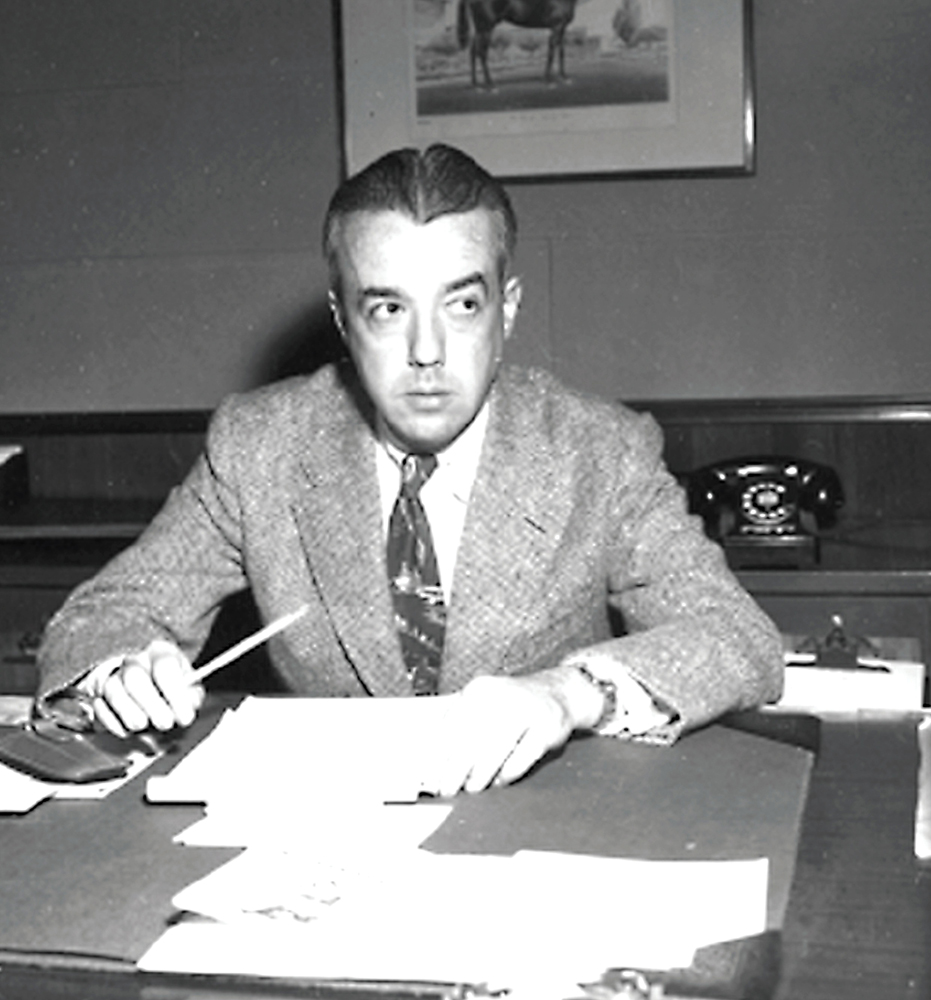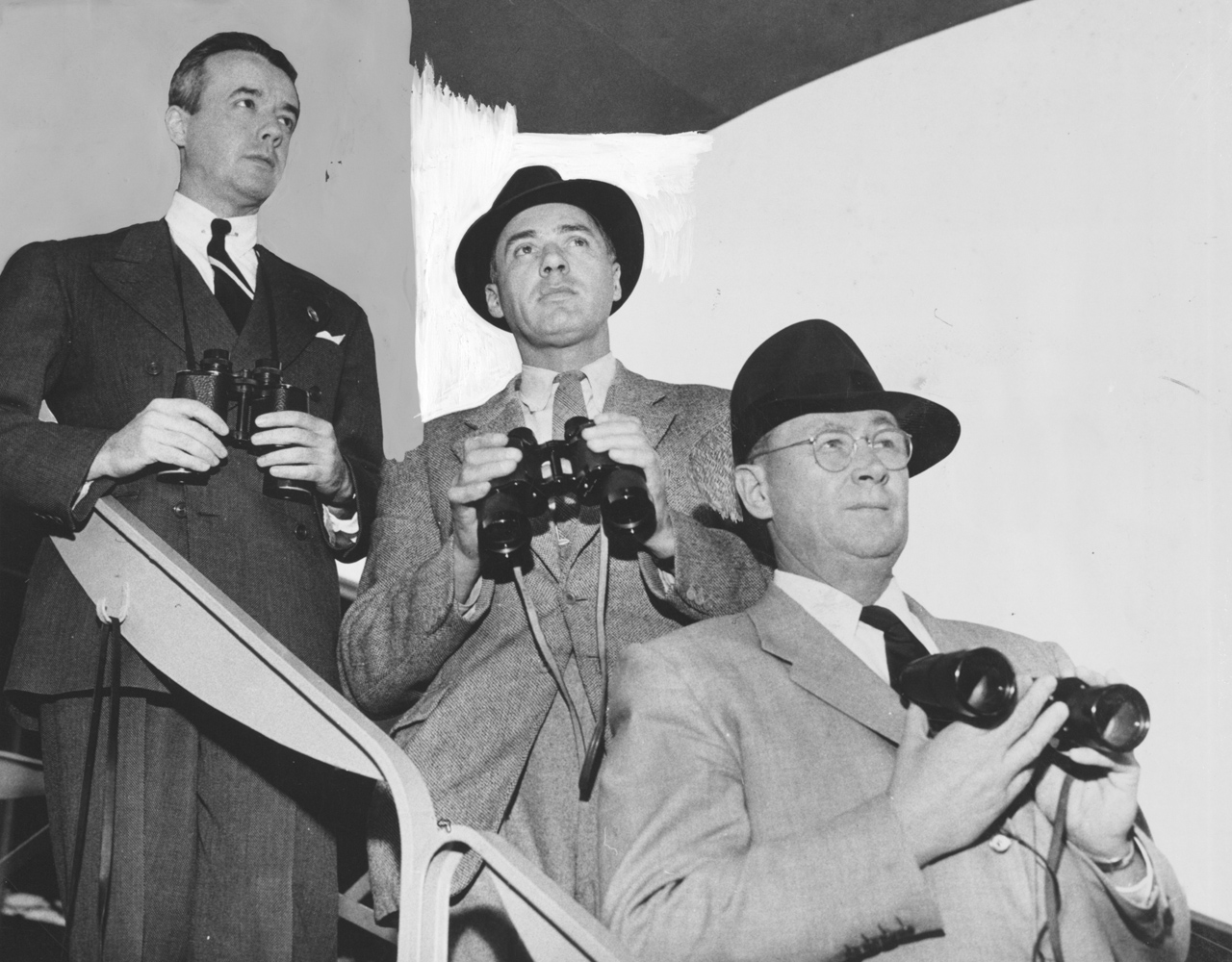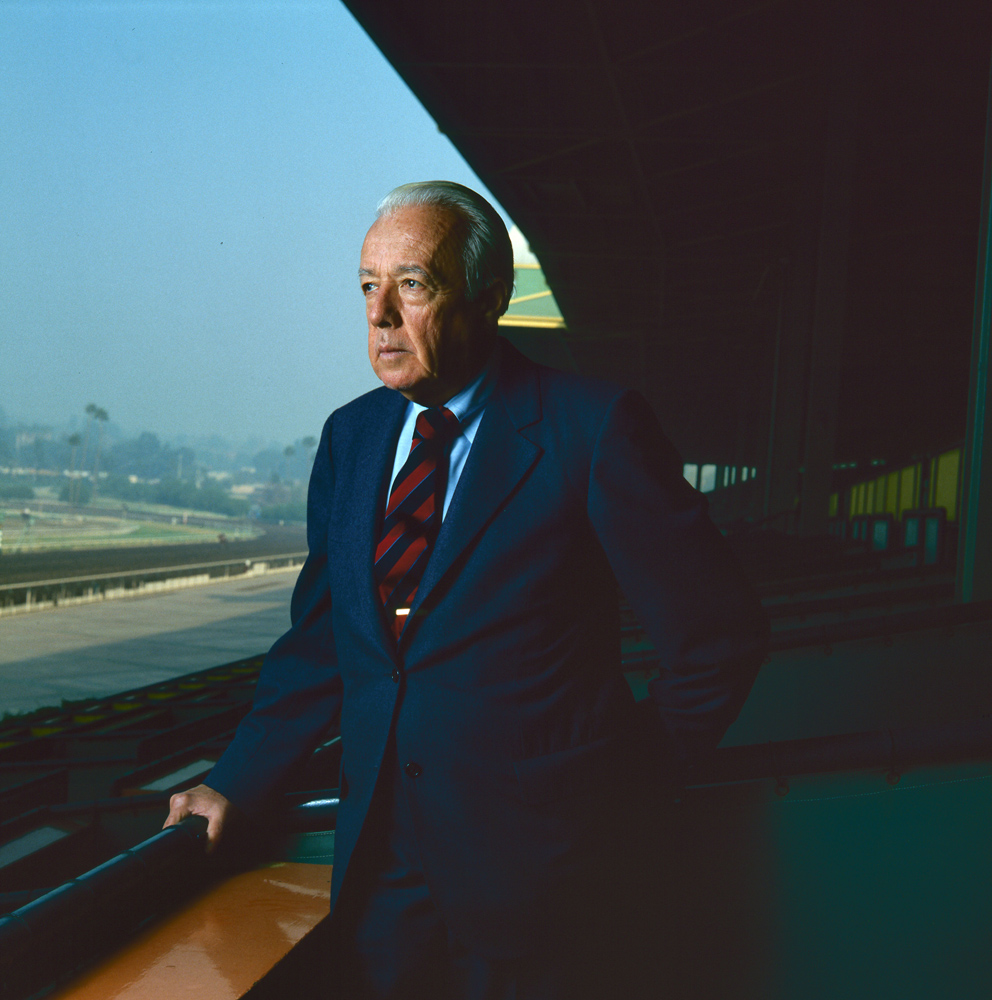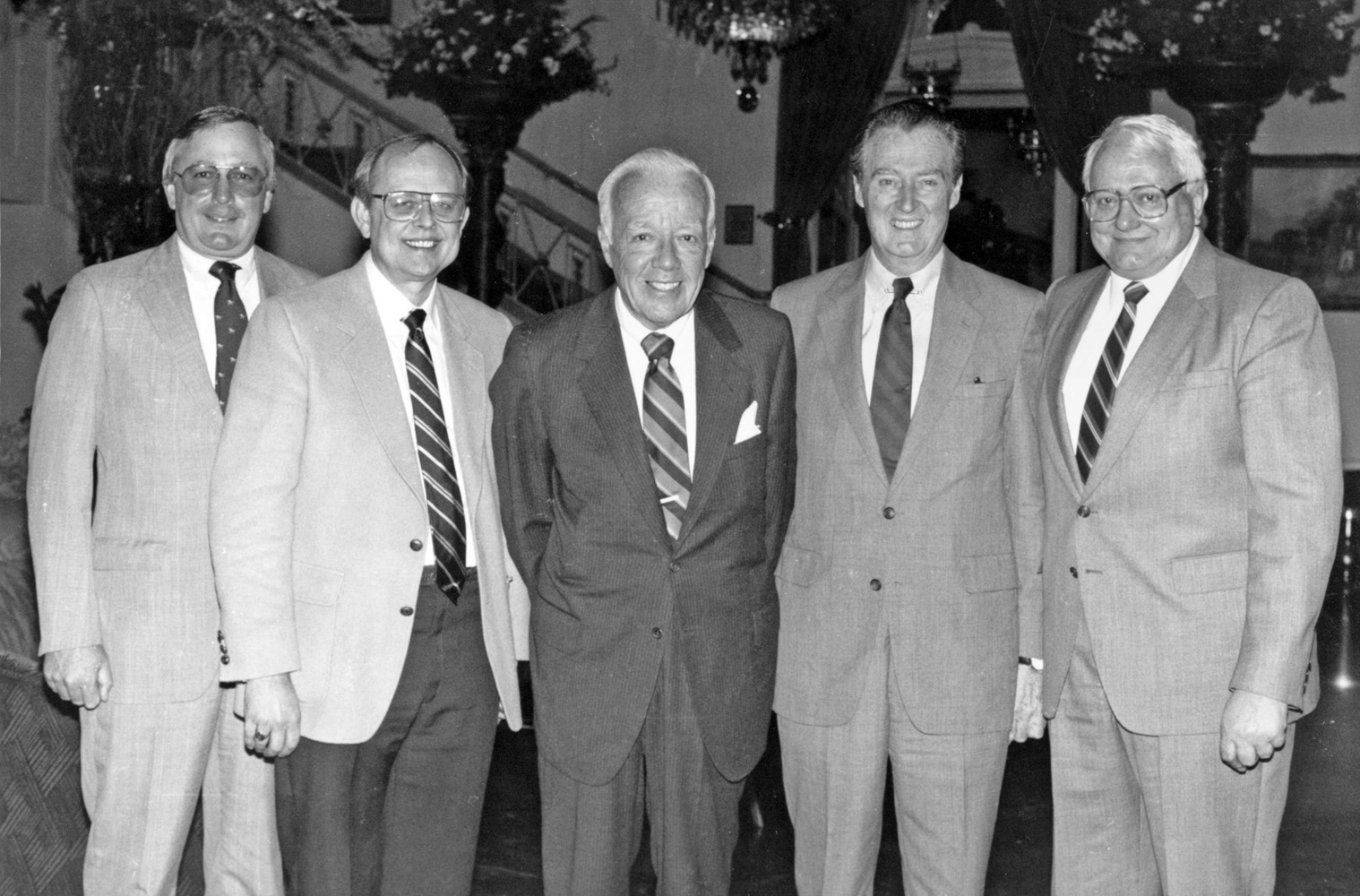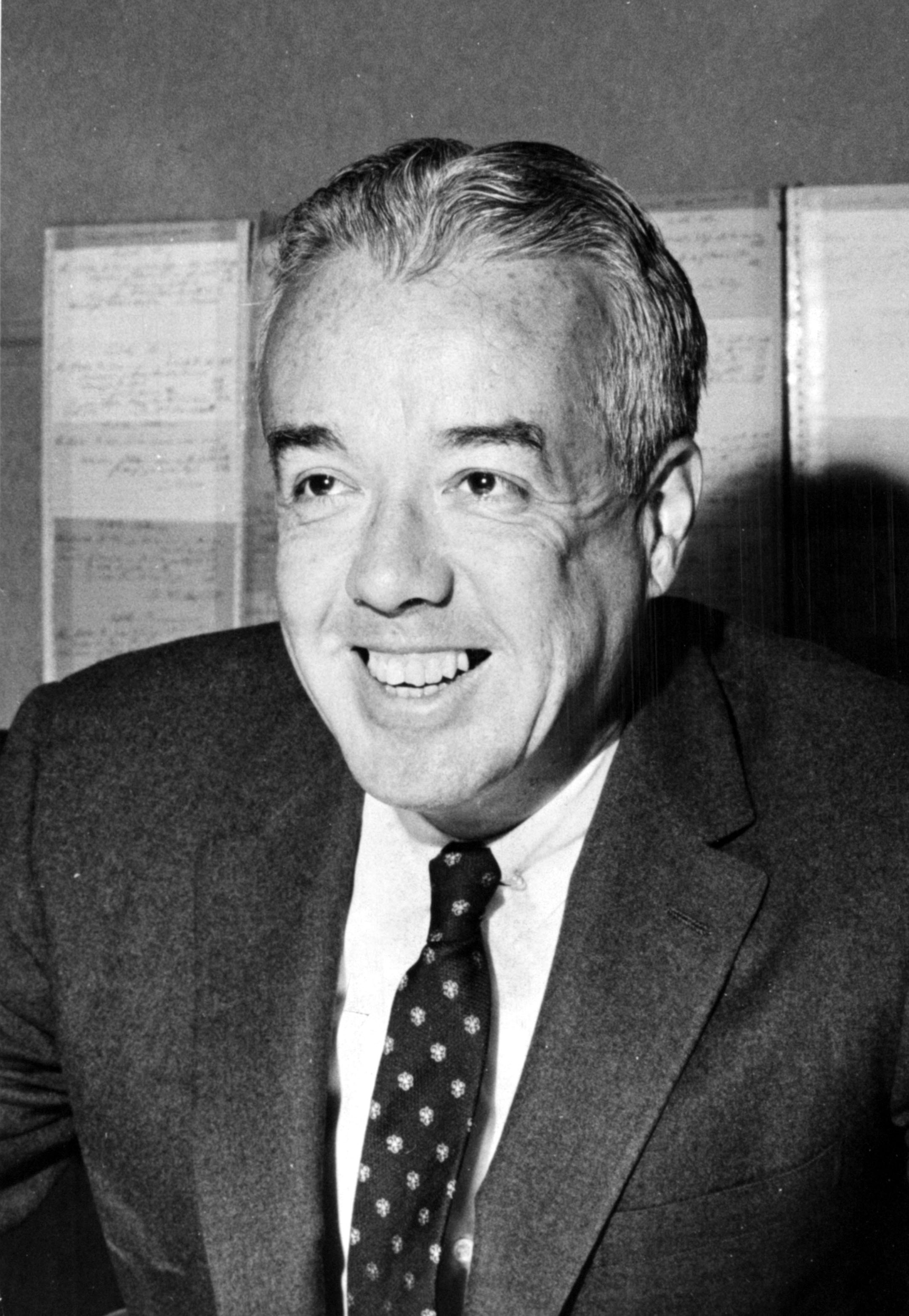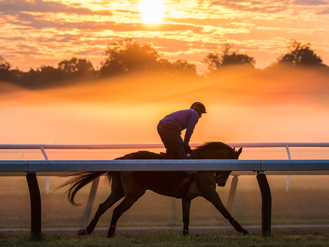Frank E. "Jimmy" Kilroe
Frank Eugene Kilroe, known to racetrackers from California to New York by his nickname “Jimmy,” was one of the most respected and influential figures in American thoroughbred racing during the second half of the 20th century.

2019
June 28, 1912, New York City
Nov. 16, 1996, Pasadena, Calif.
Biography
Frank Eugene Kilroe, known to racetrackers from California to New York by his nickname “Jimmy,” was one of the most respected and influential figures in American thoroughbred racing during the second half of the 20th century.
Born in New York City in 1912, Kilroe was the second son of Dr. Edward P. Kilroe and his wife, May. According to family legend, Kilroe’s older brother had an imaginary friend named Jimmy. “When I arrived, Kilroe once said, “he began calling me by that nickname.”
Kilroe entered Columbia University at the age of 14, completed his undergraduate work by 18, and earned his master’s in American literature at 22. He put the latter degree to good use when he went to work for 20th Century Fox as a script reader. He also wrote short stories as a freelancer for publications such as Colliers, Liberty, and The American Magazine.
Kilroe’s father was a general practitioner, whose clients included Eugene Wood, president of the old Jamaica Race Course. Upon Wood’s death, Dr. Kilroe became president of the Metropolitan Jockey Club. In 1941, Jimmy Kilroe was hired in the racing office, learning the ropes from John B. Campbell and Francis P. Dunne.
When World War II broke out, Kilroe served with the Army’s 11th Armored Division in Europe, fought in the Battle of the Bulge, and climbed to the rank of sergeant major. Kilroe’s assignments included the liberation of a Nazi prison camp in Austria.
Following his honorable discharge, Kilroe resumed his career in racing in Chicago and New York. In 1950, he added California to his circuit and was named racing secretary at Santa Anita in 1953. Kilroe assumed the same role in New York the following year and maintained this bi-coastal arrangement for the remainder of the decade. Following the opening of the new Aqueduct racetrack in 1959, Kilroe settled full-time in California.
Kilroe was instrumental in Santa Anita’s rise in prominence as a winter base East Coast-based stables. Relying upon his extensive New York connections, Kilroe led an infusion of many of the top eastern barns into California for the winter months. In the 1970s, Kilroe assumed control of the racing programs at both Hollywood Park and Del Mar, developing a cohesive schedule beneficial to all the tracks and providing stability and consistency for California racing.
“From the very first years he came to California, you could see how things began to change,” Hall of Fame trainer Ron McAnally said of Kilroe. “He absolutely made California racing.”
Kilroe's numerous honors included the Eclipse Award of Merit in 1979 and the Thoroughbred Club of America’s Honor Guest the prior year. Kilroe became a Jockey Club member in 1981, senior vice president of the Los Angeles Turf Club and Oak Tree Racing in 1982, and a Jockey Club steward in 1983. Kilroe also served on the Publications Committee of The BloodHorse, wrote for Daily Racing Form, the Thoroughbred Record, and Sports Illustrated, and was involved in the creation of the American Graded Stakes initiative. Furthermore, he spent time as the director of the Grayson-Jockey Club Research Foundation, served as a trustee of the National Museum of Racing and Hall of Fame, and an advisor for the American Horse Council.
A disabling stroke in 1989 led Kilroe to retire the following year, but he still attended the races and spoke on critical issues within the sport.
“I wouldn’t go so far as to say that racing gave me my life,” Kilroe said. “But I am certain it has given me what made living a pleasure rather than an ordeal.”
Achievements
Eclipse Award of Merit — 1979
Media
